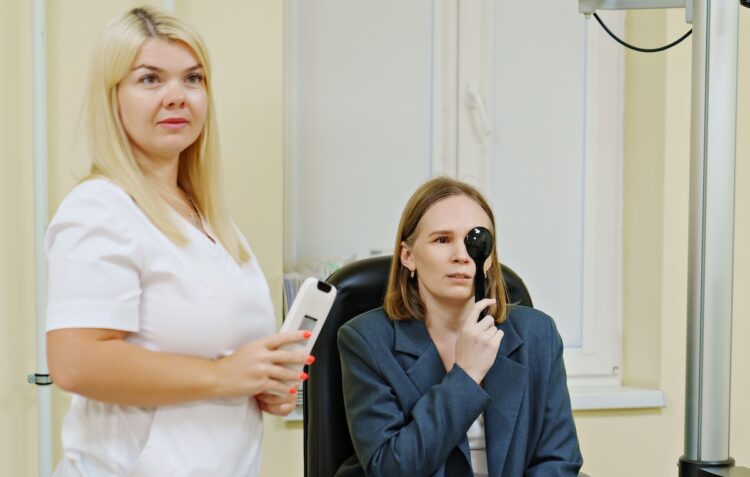In the first instalment of this two-part series, Marianne Coleman and Elaine Grisdale explain the condition, dementia-friendly eyecare, and the relevance to optical dispensers.
Around the world, people are living longer. This increase in the ageing population is accompanied by an increase in the prevalence of dementia, the most common neurodegenerative condition worldwide. This means increasing numbers of people living with dementia will be seeking eyecare, for simple refractive error and for age-related ocular pathologies.
What does this mean for optical dispensers? This two-part article will provide an overview of common features of dementia and how they may impact an everyday visit to your practice, or eyecare activities in residential aged care. We will share simple yet impactful changes to create a dementia-friendly eyecare experience.
What is dementia, and what is it not?
• Dementia is an umbrella term for diseases with symptoms caused by accumulation of protein in different areas of the brain. Although we may be familiar with some common types of dementia, such as Alzheimer’s disease or vascular dementia, there are over a hundred different types of dementia (Futurelearn, 2018).
• Dementia is a leading cause of disease burden in Australia, even ahead of other conditions such as cancer. It is estimated that 411,100 Australians were living with a dementia in 2023, with numbers projected to double by 2058 (Australian Institute of Health and Welfare, 2024)
• Dementia is not a normal part of ageing, but it can affect many older people (almost one in 10 aged over 65 in Australia).
• Dementia is not just a memory problem. Some types of dementia can start with communication difficulties or changes in mood or behaviour, with memory relatively unaffected.
Why does good eyesight matter in dementia?

Being able to see well is very important to both people with dementia, and the people who support them. The 2022 World Alzheimer’s report identified that looking after the senses for people with dementia enables them to be and do what matters most to them in their daily lives (Alzheimer’s Disease International, 2022). Two thirds of people with dementia live in their communities, and we all want to live in our own homes as we age, so maintaining independence and daily activities is important.
“Recently, a major report from leading medical journal The Lancet added untreated sight loss to the list of risk factors for dementia.”
Recently, a major report from leading medical journal The Lancet added untreated sight loss to the list of risk factors for dementia (Livingston et al, 2024). Emerging evidence suggests that having well-corrected vision (and hearing) can improve quality-of-life and independence for people with

dementia (Littlejohn et al., 2022). Sight loss and dementia, when experienced together, can make things challenging for people with dementia and their carers/supporters. Good eyesight can support a sense of time and the use of visual aids to memory, such as reminder boards or assistive technologies. Essentially, poor eyesight can cause many problems for people with dementia, and is not uncommon (Aldridge and Newsome, 2022).
A previous UK study (Bowen et al., 2016) found up to one in three people with dementia can experience some level of sight loss, and over 40% of this was remediable through simply updating or replacing spectacles. There is a huge role for eyecare professionals in dementia care. We must work together to help people with dementia have a great experience when having their eyes tested, and when interacting with eyecare professionals. We want people to go away happy, and seeing as well as possible. That is “dementia-friendly eyecare”.
How can dementia impact the work of dispensers?
It is helpful to have an understanding of some key features of dementia, and how these may impact the eye test and any subsequent dispense:
1. Cognitive fatigue: An ordinary eye examination and associated communication can be mentally exhausting for some people with dementia.
2. Difficulties with decision-making: This can be personal or financial.
3. Responsive/changed behaviours: Previous research suggests that anxiety and agitation are key behaviours that some people with dementia may experience when visiting for an eye test. Watch for hand-wringing, avoidance of eye contact or abruptly leaving the room.
4. Memory loss: Misplacing glasses or accessories, appointment non-attendance.
5. Altered perception: Spatial vision for navigation and depth perception can be affected. Time perception can be affected too – a short wait can feel like an eternity.
How can we help people with dementia to have a great eyecare experience? Stay tuned for top tips in Part 2 of this article in the November issue of Insight and online.
ABOUT THE AUTHORS: Marianne Coleman works within the National Centre for Healthy Ageing at Monash University & Peninsula Health. Elaine Grisdale is the director of development at the International Opticians Association and scientific director of the SILMO Academy.
More reading
ODA partners with CR Labs; announces Fiji aid trip
Bobby Bugden – an optical dispenser, owner and community champion




